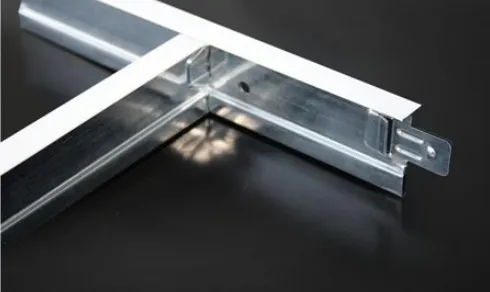Dec . 19, 2024 16:57 Back to list
Exploring Techniques for Hatch Ceiling Designs in Modern Architecture
Understanding Hatch Ceiling An Overview
In the world of construction and design, the term “hatch ceiling” refers to a concealed ceiling space that allows access to essential elements of a building's infrastructure. Often overlooked, this functional component plays a crucial role in the maintenance and operation of commercial and residential spaces. In this article, we will explore the significance of hatch ceilings, their design considerations, and the various types available.
Defining Hatch Ceilings
A hatch ceiling typically comprises a concealed access panel that can be opened to reveal the void above the ceiling tiles where ductwork, plumbing, electrical systems, and other services are installed. This space is vital for the upkeep of a building's infrastructure, as it allows technicians and maintenance personnel to perform inspections and repairs without disturbing the occupancy below.
The Importance of Hatch Ceilings
Hatch ceilings serve several important functions in buildings
1. Accessibility They provide convenient access to hidden systems that require regular monitoring and maintenance. This ensures that issues can be addressed promptly, preventing minor problems from escalating into major repairs.
2. Safety By allowing access to systems, hatch ceilings enable workers to perform necessary inspections and repairs in a controlled and safe manner. This minimizes the risk of accidents that can occur when access is gained through less structured means.
3. Aesthetic Considerations Hatch ceilings can be designed to blend seamlessly with the overall interior design of a space. By using materials and finishes that match the surrounding ceiling, they can remain unobtrusive while still serving their functional purpose.
4. Space Efficiency In urban and commercial environments where space is at a premium, hatch ceilings provide a way to maintain critical infrastructure without sacrificing valuable floor space.
Design Considerations
When incorporating hatch ceilings into a building’s design, several factors must be considered
hatch ceiling

- Location Determining the best locations for access panels is crucial. These should be positioned where maintenance is most likely needed and can be easily reached. Common locations include utility rooms, hallways, and above janitorial closets.
- Size and Type of Hatch Depending on the systems being accessed, the hatch size can vary significantly. Larger hatches may be necessary for accessing large mechanical systems, while smaller hatches suffice for electrical panels or plumbing access.
- Material and Finish The materials used for hatch ceilings should match or complement the existing ceiling materials. This ensures that they do not stand out conspicuously in the design. Common materials include gypsum board, metal, and plastic, each offering different durability and aesthetic properties.
- Fire Safety In many jurisdictions, hatch ceilings must comply with fire safety regulations. This can include using fire-rated materials and ensuring that access points can be sealed correctly to maintain fire barriers.
Types of Hatch Ceilings
There are various types of hatch ceilings available, each with specific applications
1. Drop-in Access Panels These panels are installed in the grid of a drop ceiling and can be easily lifted out to provide access.
2. Hinged Access Panels Attached with hinges, these panels swing open, allowing for larger openings and easier access to mechanical systems.
3. Removable Ceiling Tiles These are integrated into standard ceiling tiles and can be replaced easily, providing a balance between aesthetics and functionality.
4. Fire-Rated Access Panels Designed to maintain fire safety, these panels are constructed to meet specific fire-resistance ratings.
Conclusion
The importance of hatch ceilings in modern architecture cannot be overstated. They provide essential access to the vital systems that support our buildings while maintaining a seamless aesthetic. When designing a space, it is crucial to consider the placement, type, and materials of hatch ceilings to ensure they fulfill their functional role without detracting from the overall design. As we continue to prioritize efficiency and accessibility in construction, hatch ceilings will remain a key element in the infrastructure of our spaces.
-
Quality Ceiling Trap Doors & Access Panels | Easy & Secure AccessNewsAug.30,2025
-
Durable Ceiling T Grid Systems | Easy InstallationNewsAug.29,2025
-
PVC Gypsum Ceiling: Durable, Laminated Tiles for Modern SpacesNewsAug.28,2025
-
Pvc Gypsum Ceiling Is DurableNewsAug.21,2025
-
Mineral Fiber Board Is DurableNewsAug.21,2025
-
Ceiling Tile Clip Reusable DesignNewsAug.21,2025







